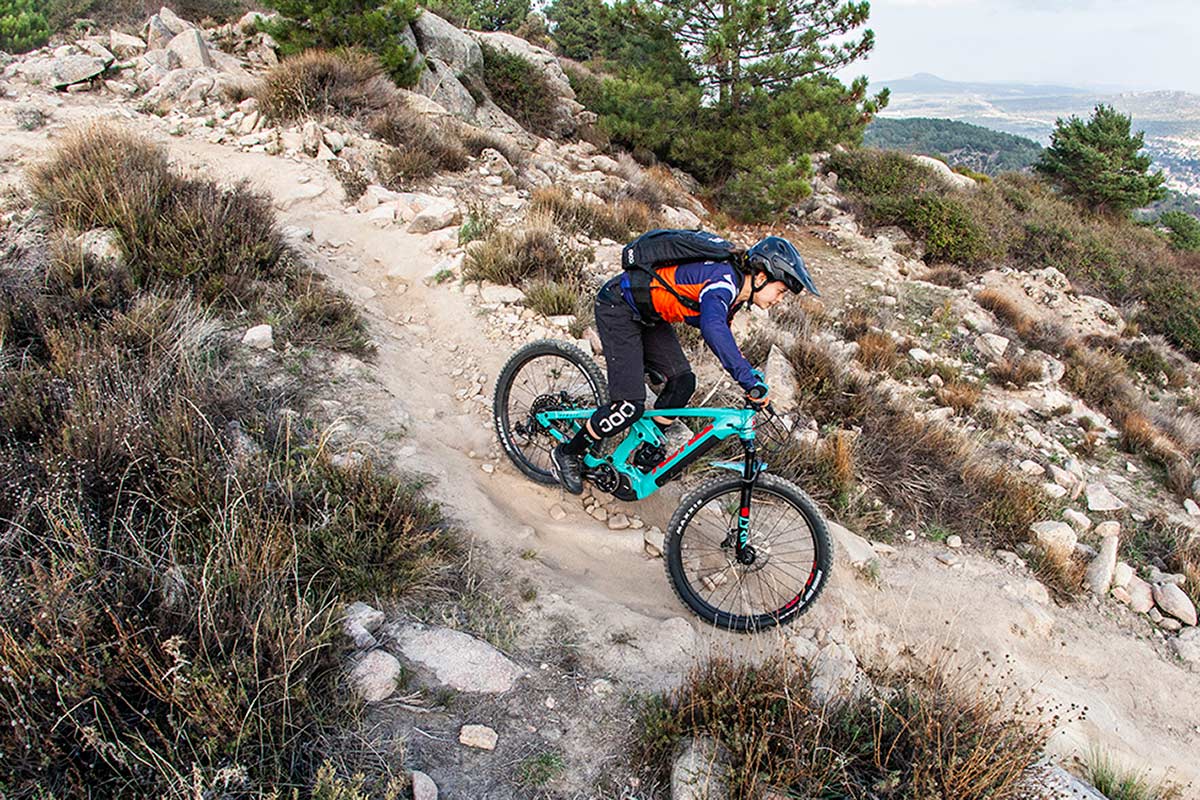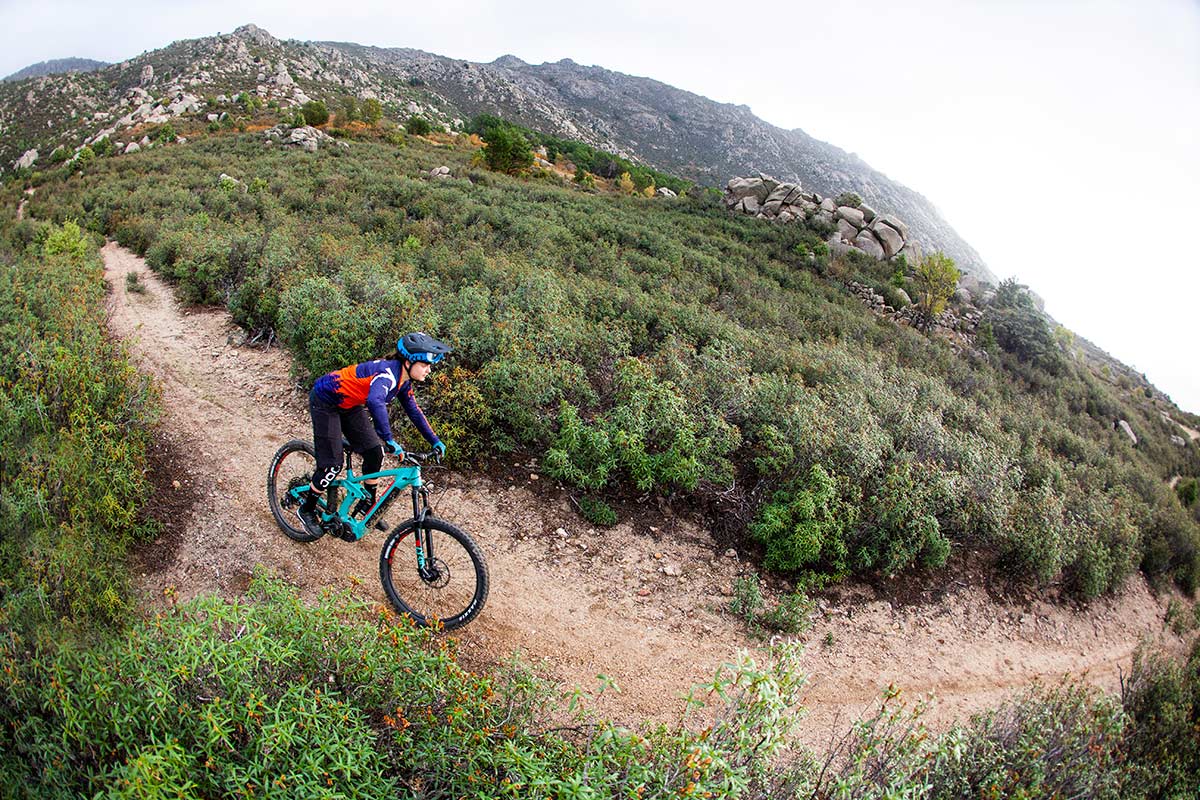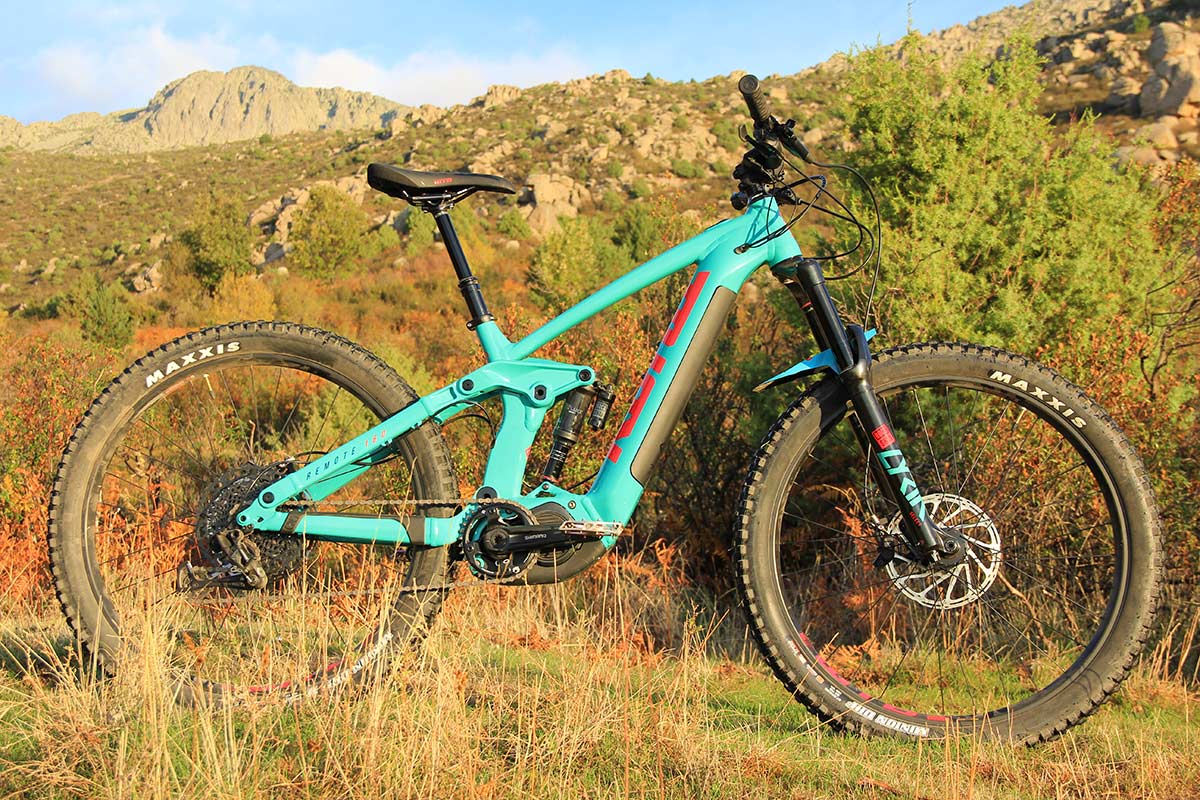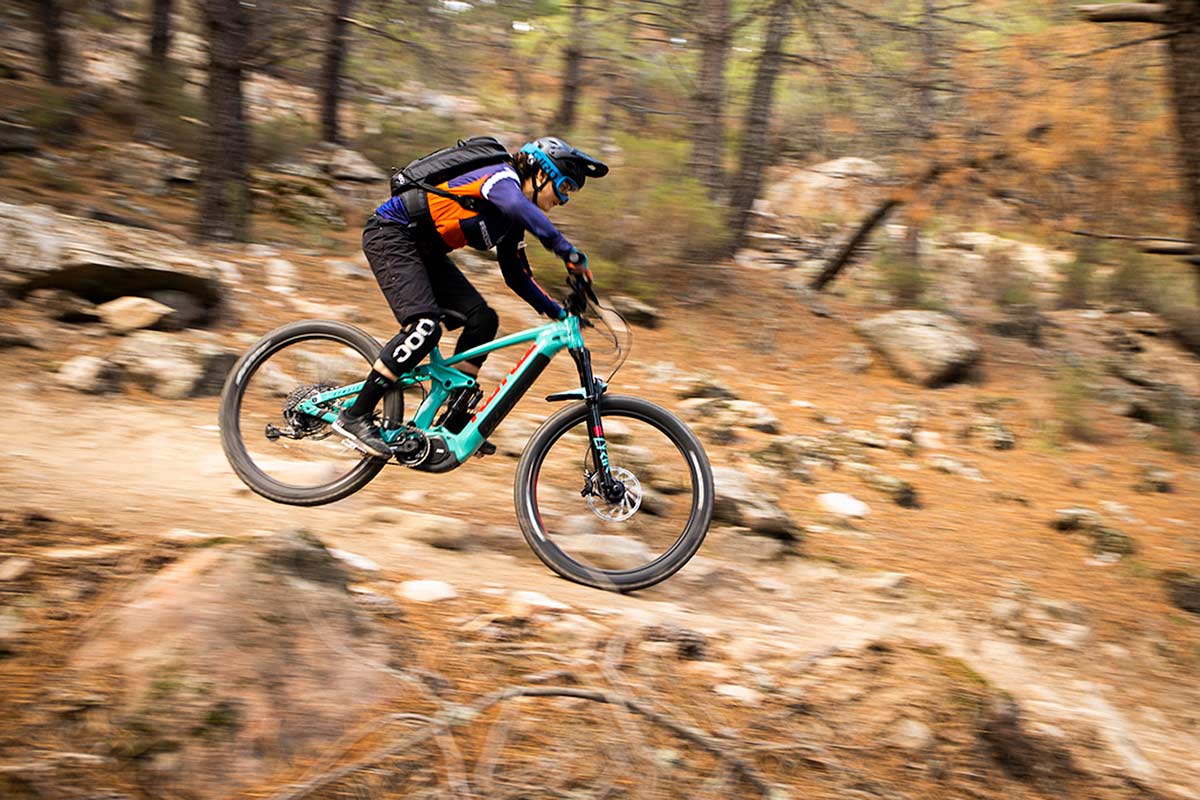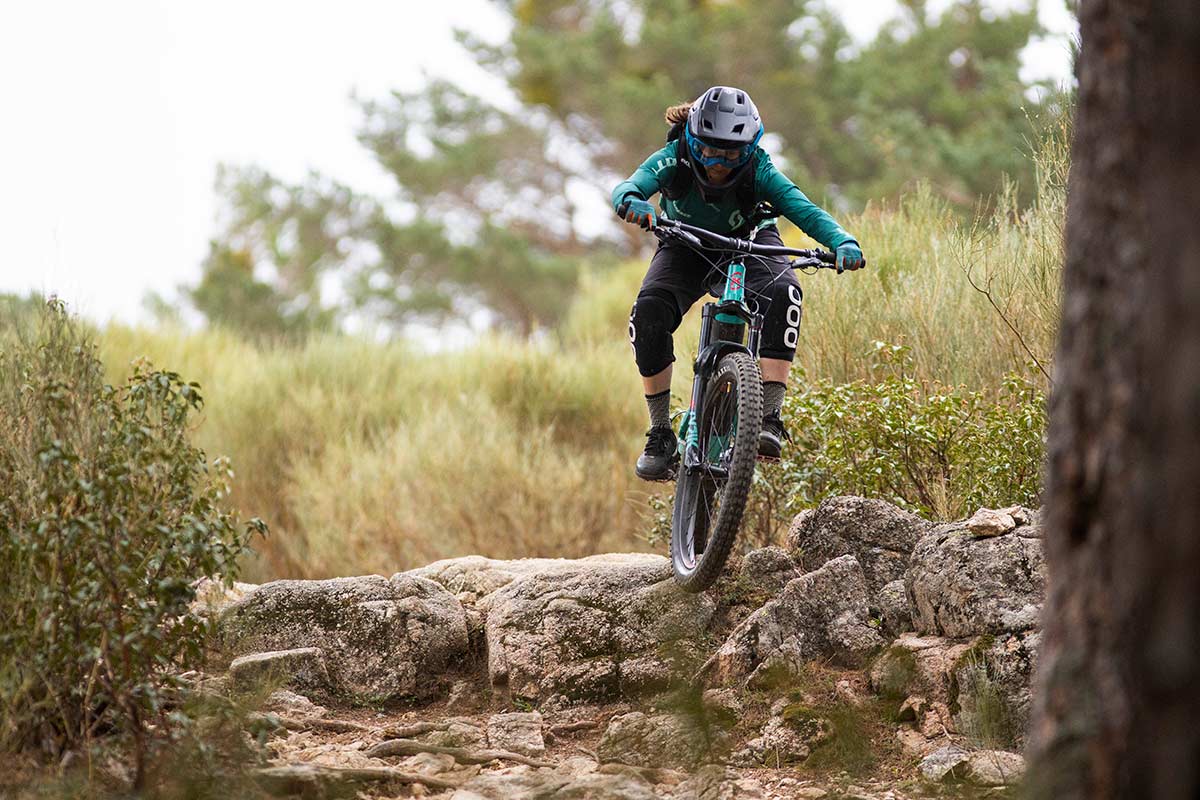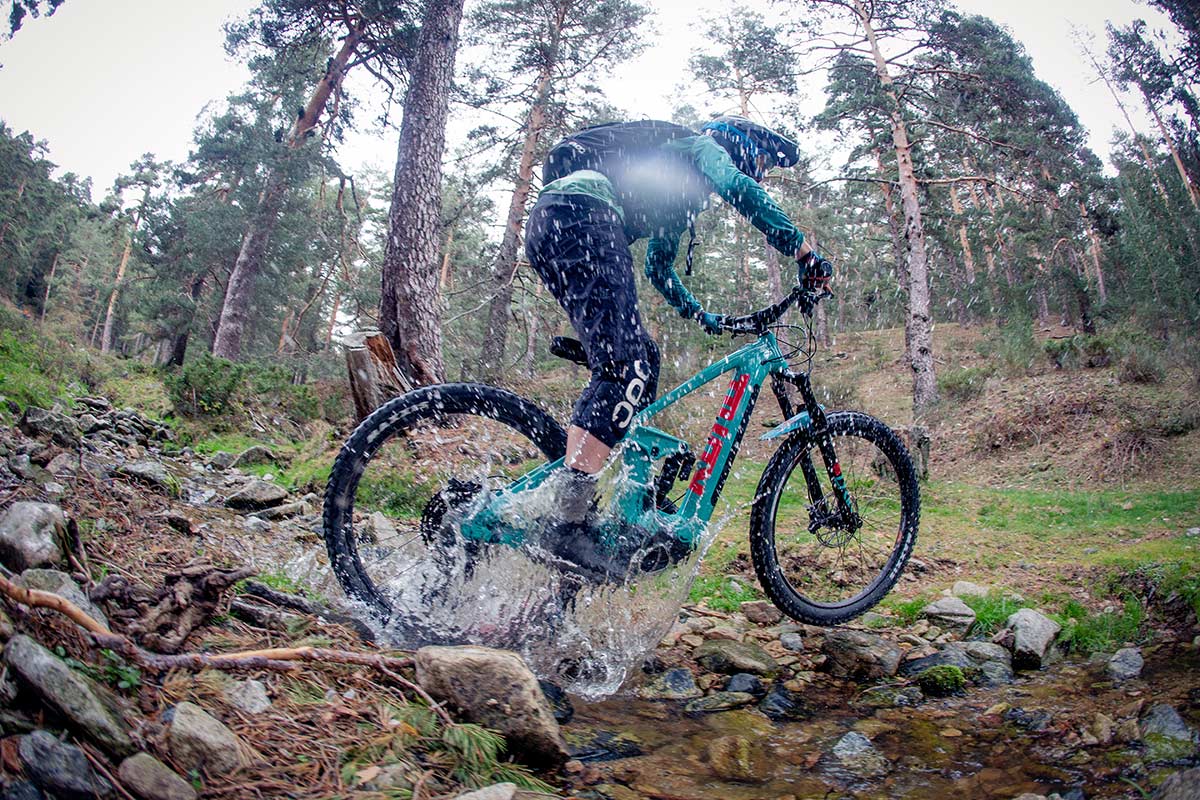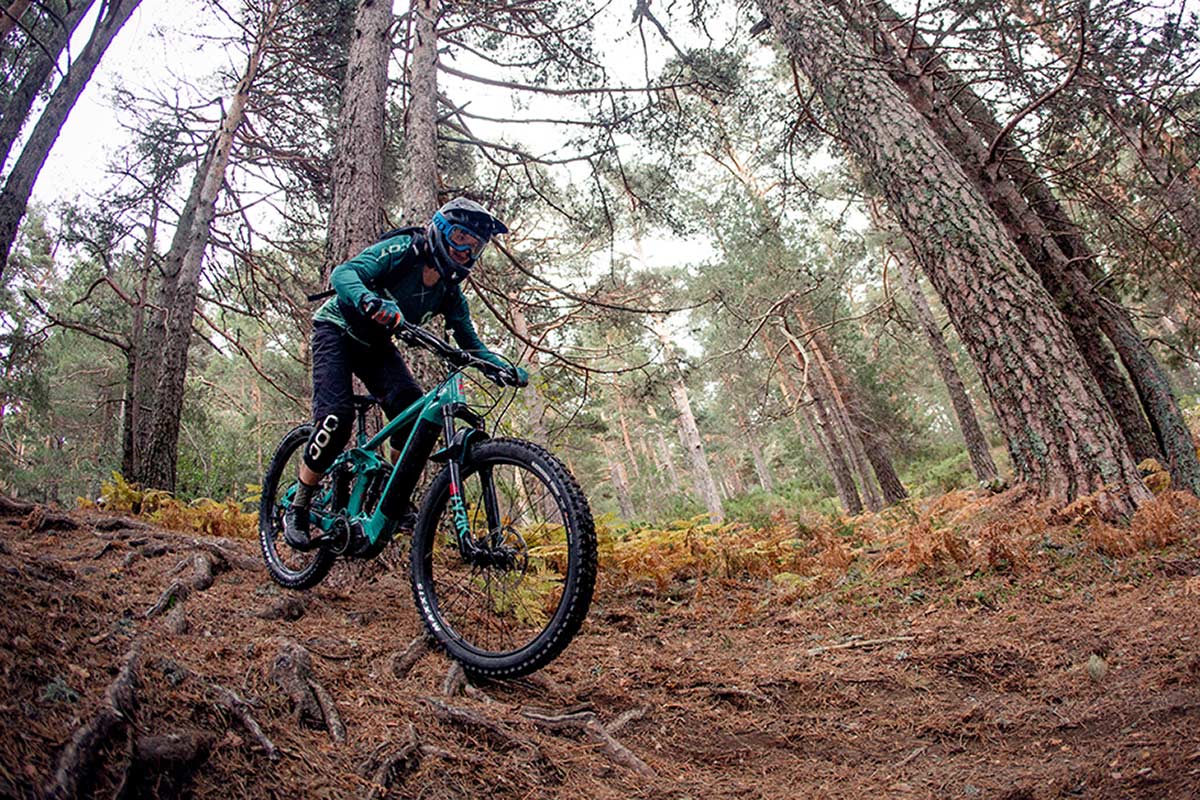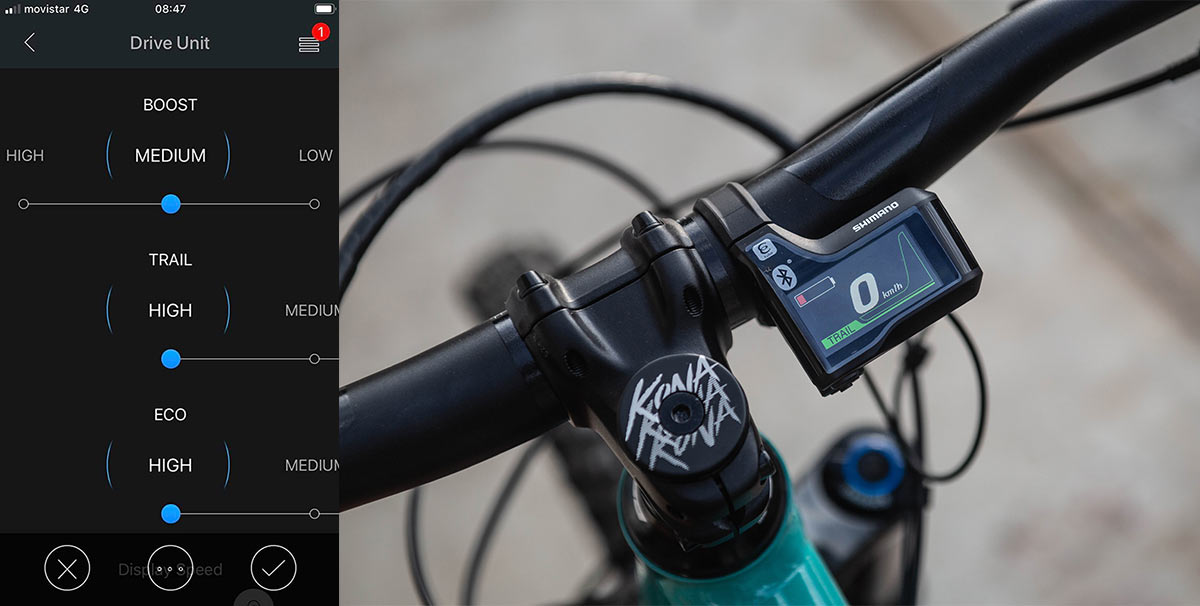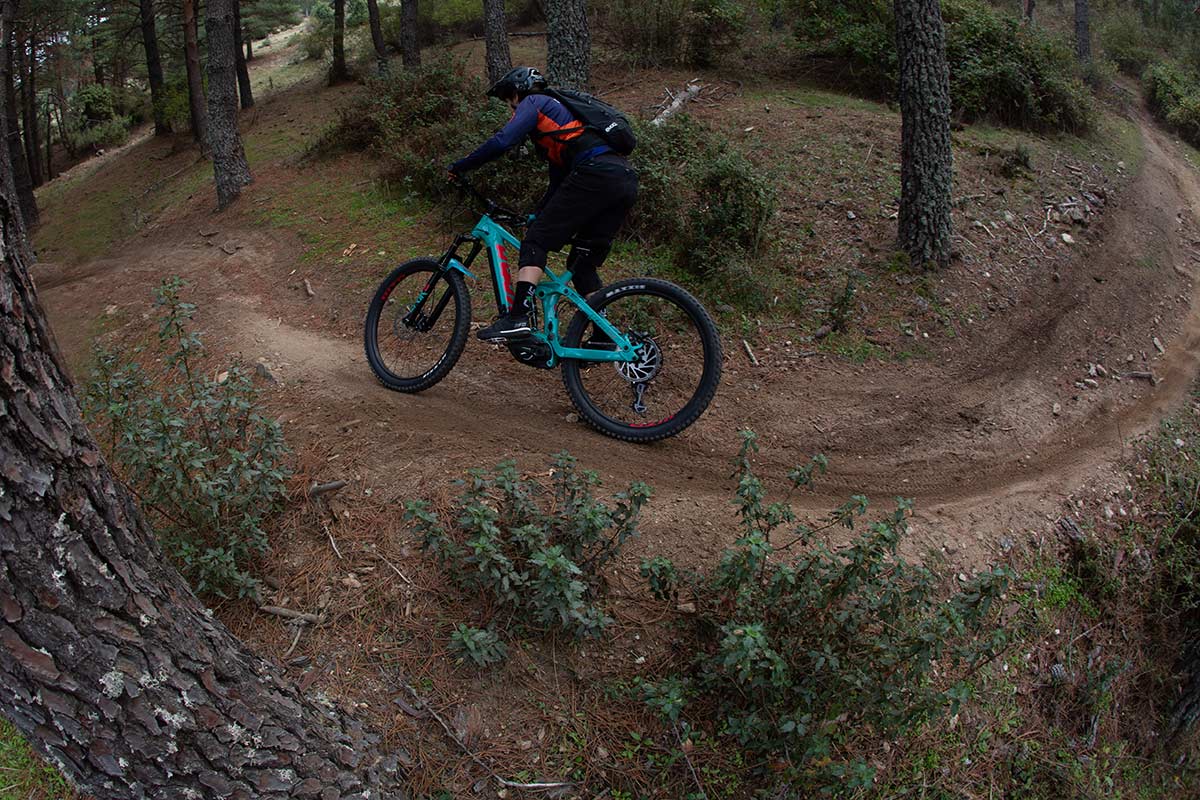Earlier this year, Kona released what is essentially an e-MTB version of their successful Process 153 enduro bike, the Kona Remote 160. Rolling on a burly 35mm 27.5″+ wheel set with 160mm of both front and rear wheel travel with super boost 12×157 rear hub spacing, this e-MTB means business – for all the tech details, click here. With the Remote 160, Kona’s aim was to produce the same ride characteristic as the Process 153, whilst giving riders the ability to go further, faster and longer than ever before. We had the great pleasure of shredding the Remote 160 with designer Trevor Porter and the rest of the Kona team in Madrid, Spain – here’s how we got on.
Kona Remote 160 e-MTB: First Ride Review
Full disclosure; extremely late to the party, this is the first e-MTB I have ever ridden any meaningful distance or technical terrain on. I have to admit, I was initially very, very sceptical about how much I would enjoy the experience. Being a very light rider at just 60kgs, I was obsessing over the likelihood of the bike just being far too heavy for me to manoeuvre about over technical terrain. The 6061 alloy Remote 160 weighs a pretty average ~23kgs in size medium, making its weight as a percentage of the whole system weight (bike plus rider) a whopping ~28%. This, I was concerned by.
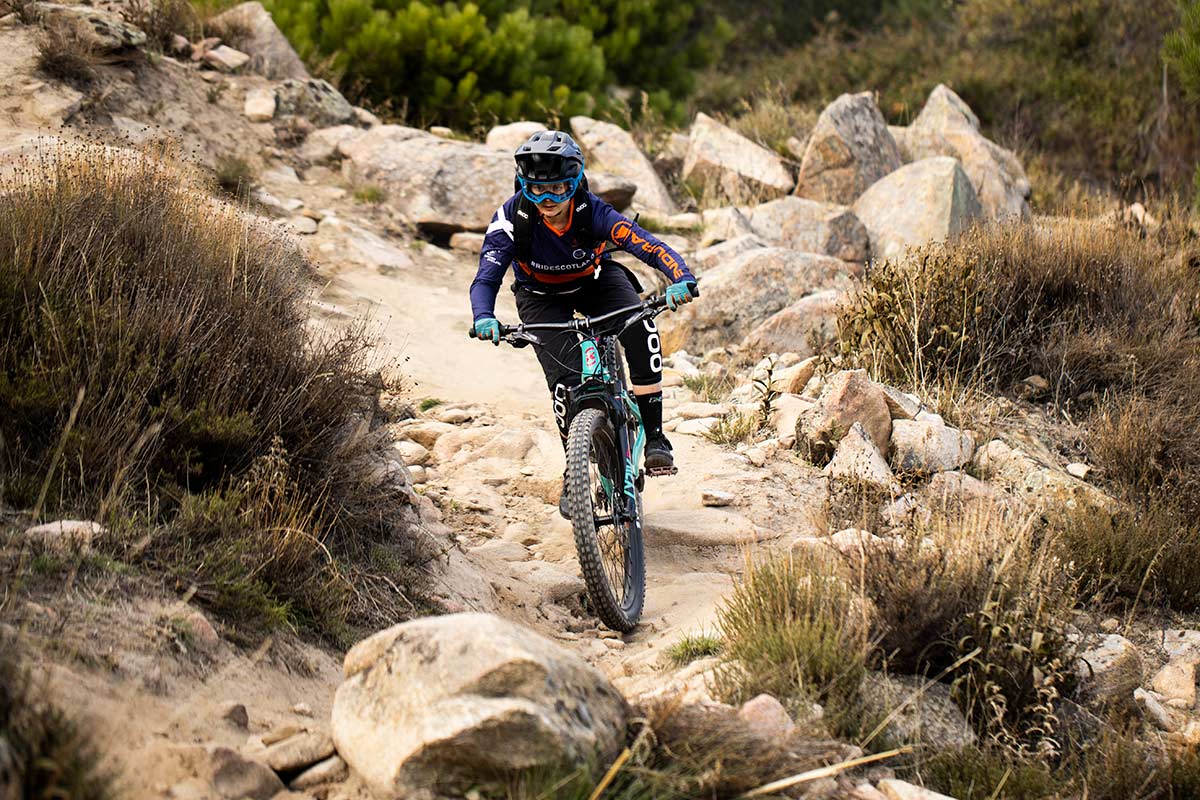
At 5ft 3″ short, I opted to ride the small frame, recommended for riders from 5ft to 5ft 3″. I found it to be a very good fit. In particular I was very happy with the 425mm reach, and the low standover height. This allowed me to run a 125mm dropper seat post, ensuring I could get the post right out of the way for that extra maneuverability on descents.
Kona Remote 160 Descending
Need I have been concerned about the weight? Absolutely not. News flash: e-MTBs ride just like MTBs! At least, that’s true for the descents. I was envisaging being sat aboard some sort of tractor-like vehicle with no ability to turn it or stop it even, never mind send it or bunny hop on it. How wrong I was.
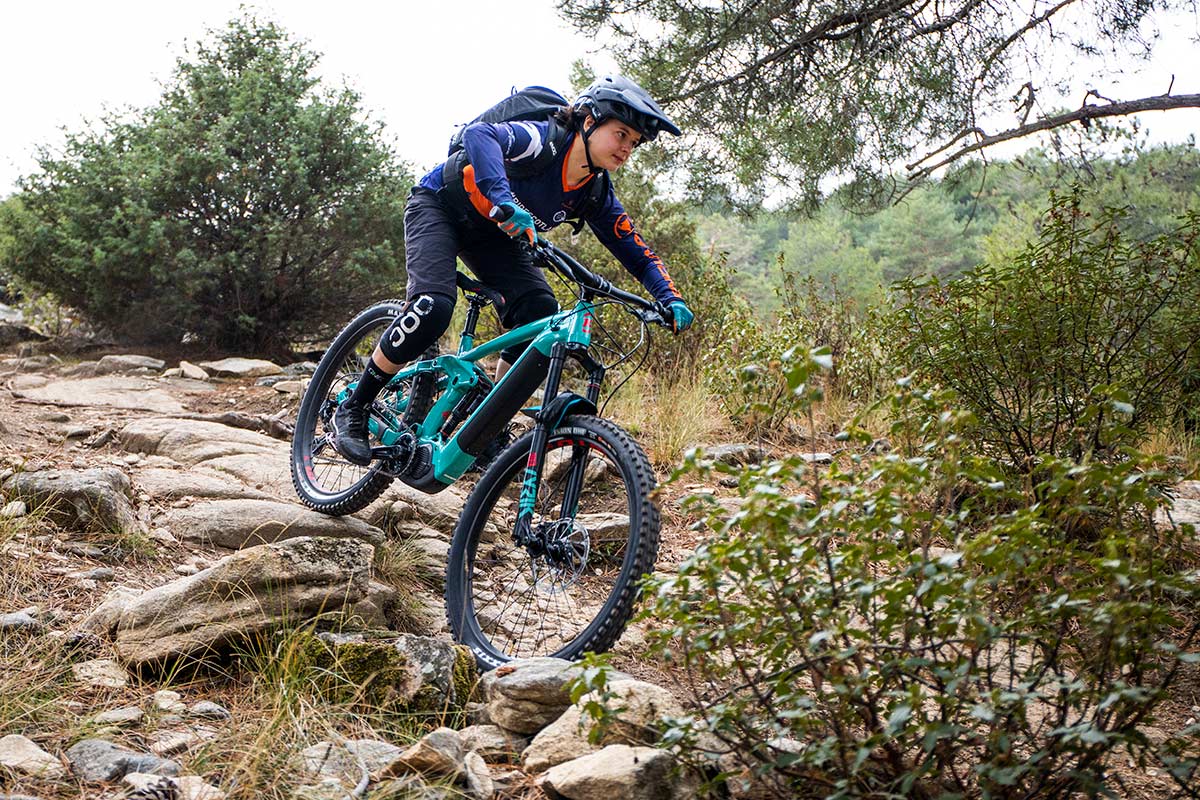
We rode some pretty gnarly trails during our time in Spain, including loose sandy singletrack interspersed with interesting rock slab features in Moralzarzal, and some boulder strewn natural doubletrack in Cercedilla. Once the brakes were bedded in (and after some “oh shit, I can’t stop” moments) the bike handled it all without a fuss. The additional heft as compared with my standard analog enduro bike actually vastly improved descending in a number of ways.
First up, I totally forgot about the concept of front wheel traction or the potential lack thereof. The added weight of the motor and battery feels extremely well balanced over the bike, and the traction I was getting through both the front and back wheels, even over sandy loose terrain was somewhat unfathomable. This I’m sure also had a lot to do with the plus size tyres seated on the 35mm internal width rims, increasing the size of the contact patch between tyre and trail. The low BB height makes the bike feel extremely well planted over rough terrain.
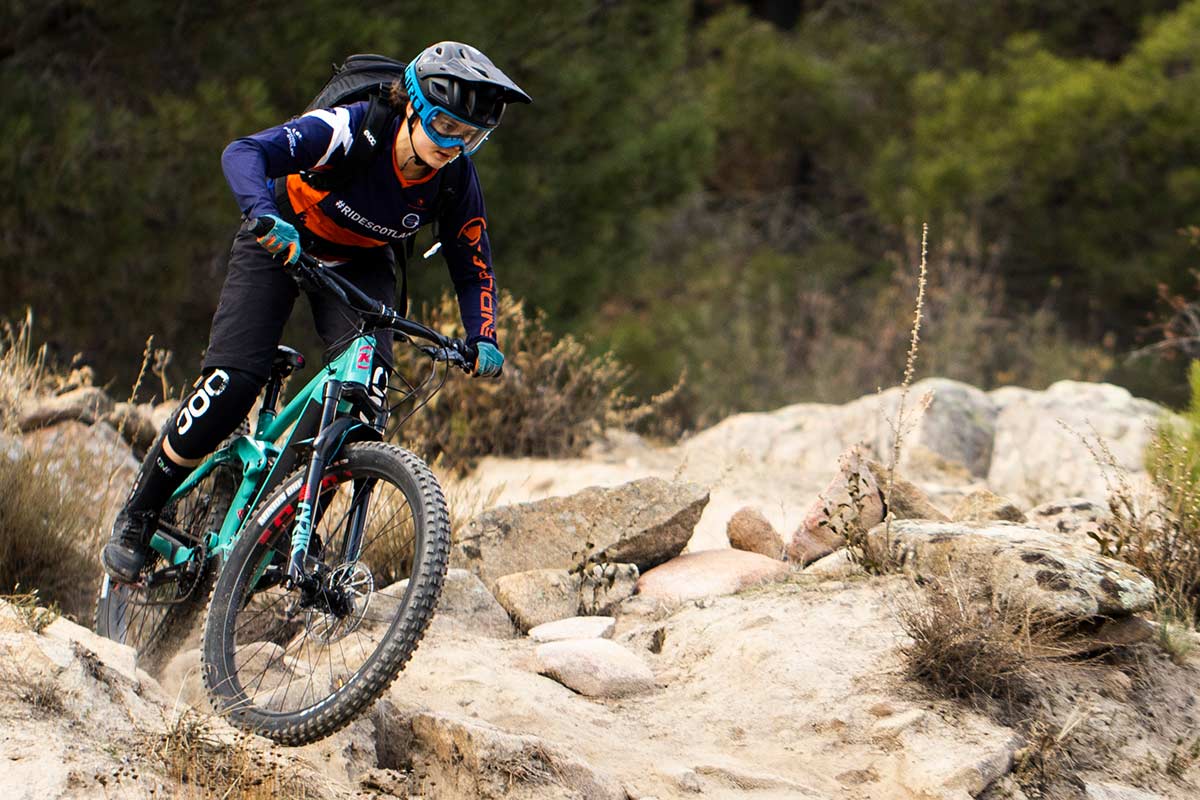
Second, this e-MTB is without a doubt one incredible skills compensator. When faced with a boulder strewn trail, some of which move, some of which don’t, you can’t take one of two options. Either carefully pick your way down it, selecting lines of least resistance and avoiding square edged hits, or let go of the brakes, stay central over the BB and hope for the best. The Remote 160 encourages the latter style of riding. The bike’s heft, balanced geometry, low BB and plus size tyres make you feel somewhat invincible, and in a way, you are. Making plenty of questionable lines choices over the rough terrain, I came away having gotten away with all my mistakes, maintained momentum, and had a damn good time doing so.
Finally, the Remote 160 was surprisingly nimble. OK, not so nimble that I wanted to cutty into every turn, but nimble enough to effortlessly hop from one line onto another, controllably send rock drops and lighten the front wheel over loose or rooty section of trail. It wasn’t quite so easy to throw into turns as my non-electric enduro bike, forcing me to look to open up turns as wide as the trail would allow, and generally approach descents with a bit more anticipation of what was ahead, which is never a bad thing. Even with some questionable hucks to flat, the suspension never felt harsh.
The Kona Remote 160 uses Kona’s tried and tested Beamer Suspension platform, a single-pivot suspension design using a linkage actuated shock. The bike has pretty amazing small bump sensitivity due to the flat leverage curve over the first third of rear wheel travel. From there on it ramps up with 12.5% progression, providing a bottomless feel.
Lastly, steep sections of trail felt a little scarier than they would on a non-electric mountain bike, purely because of the additional weight that you’re fighting against while braking. That said, Kona have spec’d the Remote 160 very well with powerful SRAM Code R 4-piston which provide good modulation, ensuring the wheels keep rolling for traction rather than locking up.
Going Up with the Shimano STePS motor
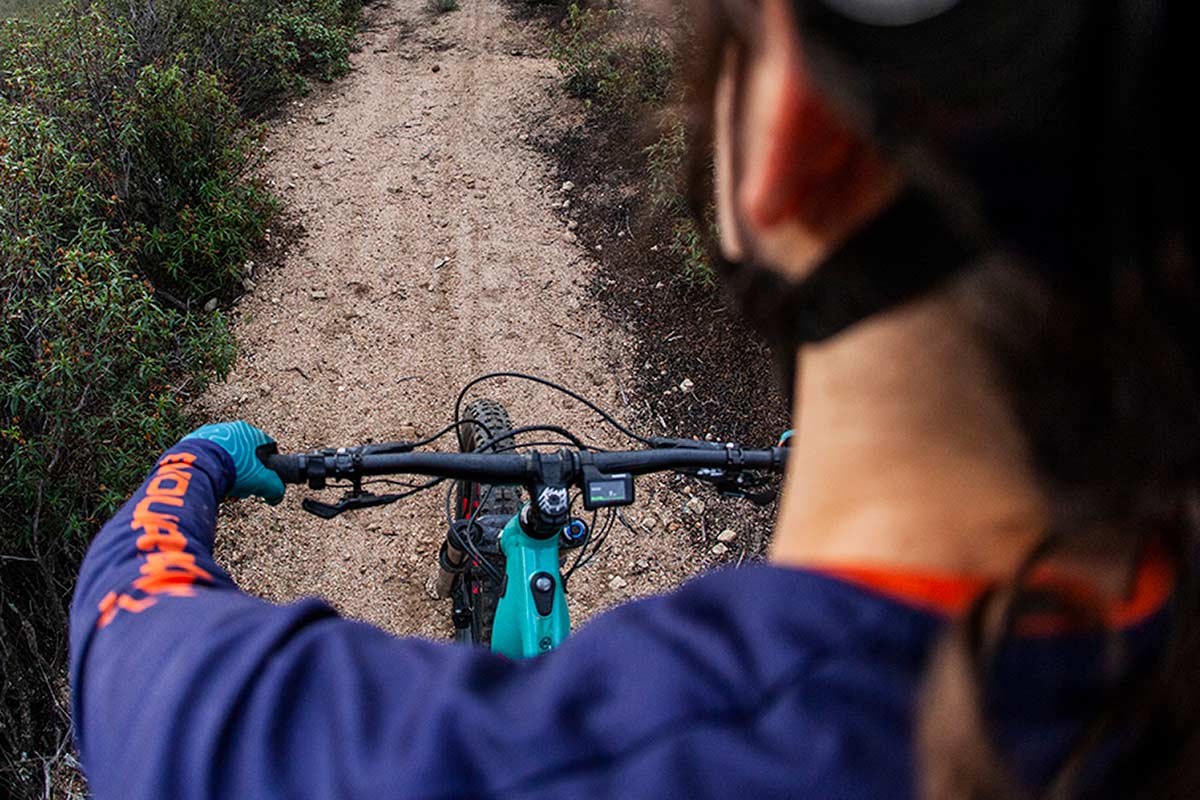
Climbing on an e-MTB is a whole new kettle of fish for me. The Kona Remote 160 houses a Shimano STePS E8000 motor at the BB, and a 504 Wh Li-ion battery inside the semi-cylindrical downtube. For those who are unfamiliar with how the motor on an e-MTB works, it isn’t like a motorbike. You do have to pedal, and the more torque you give the drivetrain, the more assistance the motor provides. It doesn’t jolt suddenly into action; the motor gently ramps up its assistance so that you experience a really gentle acceleration up to full assistance. While the low bottom bracket makes the bike feel very well planted over rough terrain, it also made me obsess a little about pedal strikes. However, to account for the lower BB, Kona have spec’d the Remote 160 with 165mm crank arms to reduce the likelihood of this happening. While I was a little tentative pedalling through rock gardens initially, I soon learned that it was safe to do so, and didn’t experience many pedal strikes.
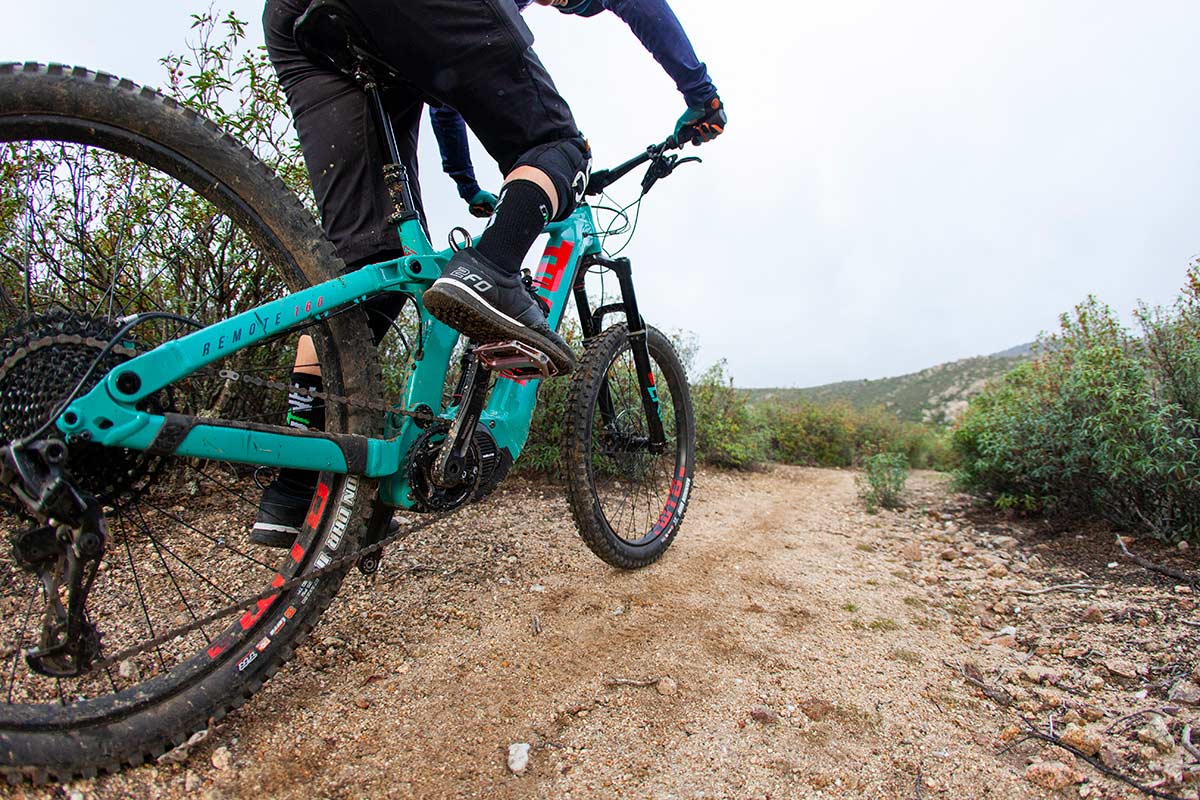
The motor has three modes of assistance; Eco, Trail and Boost, but the assistance will cut out as soon as you reach 25 km/h in Europe, and 20 mph in North America. Eco mode is pretty much obligatory unless you’re out to give yourself a hammering with a heavy training session and you want to lug around the bike under your own steam. With no assistance, the bike feels like someone has cable-tied the brake levers to the grips. Eco mode just makes it feel like the brakes have been released. Trail mode is where things start to get fun, and you get that “wooo, i’m flying up a hill and it is so easy” feeling. Boost mode means business and you’ll find yourself charging up the most unimaginable ascents – ones you would have definitely pushed up on a normal bike.
Each mode is itself customizable with respect to the amount of assistance it provides. By pairing your motor with the etube app on your smartphone you can set each mode to Low, Medium or High. On day one of our Spanish e-MTB adventure I had Eco mode set to High, Trail mode set to Medium and Boost mode set to Medium. With these settings, honestly, I could barely feel a difference between Eco and Trail. It was extremely subtle, compared to the striking difference between Trail mode and Boost mode. Not to worry, before setting off on our longer adventure ride on day 2, I downloaded the etube app and changed the Trail mode setting to high. Now, the difference between Eco and Trail was far more noticeable. I’d say this whole process took less than 5 minutes.
Climbing traction on the Remote 160 is very, very good. Of course, you can make the bike wheel spin if you really want to, for example if you apply a load of torque in Boost mode from a standing start on a steep loose climb. If you’re using the bike sensibly then you’ll have no qualms about traction. Being a light rider, I would have expected to struggle to keep the front wheel down on steep climbs but the geometry makes the bike super stable and well balanced.
Kona Remote 160 e-MTB: The Bottom Line
Quite frankly, I am a little concerned I may have been ruined by this e-MTB experience. Not because I now have to go back to my analog bike and slog up the climbs; I am sadist, I like that sort of thing. I say it because I feel I might have come across what is a very well thought through and very well designed e-MTB. As I said, initially I didn’t have high hopes for the bike; I was unsure about the seat tube angle and the steepened head angle, as well as concerned about how the handling would be affected by the weight. However, I was pleasantly surprised to learn that the Remote 160 behaves very much like your average analog enduro bike, perhaps even above average. Did I have to adapt my riding style? Not really. The added traction that comes from the balanced weight distribution actually made me worry less about losing the front wheel and focus more on having a good time. For the full low down on the Remote 160 tech, spec, pricing and availability, click here.
